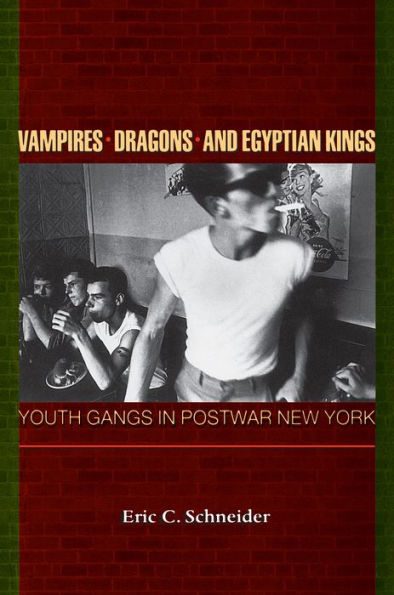Ruth Horowitz
A very strong analysis of gangs in postwar New York City. Schneider's historical approach to understanding gang activities is innovative.... This is a well-written and interesting book that should appeal to a wide audience.
Carl Nightingale
This is the kind of book we need to regain our sanity about young people and violence.
Michael B. Katz
In this marvelous and fascinating book,Eric Schneider tells the real West Side Story. With a wide array of sources-including interviews with former gang members-he locates the post-war history of New York City's gangs in the multiple transformations of the city's social ecology,economy,ethnic and race relations,institutions,and culture.
Margaret Marsh
An original and imaginative work both of historical significance and narrative power. It is thoroughly grounded in the scholarly literature. . . . At the same time,it is so well written and contains so many remarkable stories that it will be accessible to general readers as well.
Katz
In this marvelous and fascinating book, Eric Schneider tells the real West Side Story. With a wide array of sources-including interviews with former gang members-he locates the post-war history of New York City's gangs in the multiple transformations of the city's social ecology, economy, ethnic and race relations, institutions, and culture.
— Michael B. Katz, University of Pennsylvania
Ellen Dwyer
Drawing on an extraordinary range of primary and secondary materials,Eric Schneider has produced an incisive and compelling history of youth gangs in New York City.
David Wolcott
Schneider succeeds in offering an insightful analysis of youth gangs, linking the methods of social history with those of sociology,anthropology,and criminology. This book is well worth the attention of a wide readership.
From the Publisher
"A very strong analysis of gangs in postwar New York City. Schneider's historical approach to understanding gang activities is innovative.... This is a well-written and interesting book that should appeal to a wide audience."—Ruth Horowitz, New York University"In this marvelous and fascinating book, Eric Schneider tells the real West Side Story. With a wide array of sources-including interviews with former gang members-he locates the post-war history of New York City's gangs in the multiple transformations of the city's social ecology, economy, ethnic and race relations, institutions, and culture."—Michael B. Katz, University of Pennsylvania"Drawing on an extraordinary range of primary and secondary materials, Eric Schneider has produced an incisive and compelling history of youth gangs in New York City."—Ellen Dwyer, Indiana University"An original and imaginative work both of historical significance and narrative power. It is thoroughly grounded in the scholarly literature. . . . At the same time, it is so well written and contains so many remarkable stories that it will be accessible to general readers as well."—Margaret Marsh, Rutgers University"This is the kind of book we need to regain our sanity about young people and violence."—Carl Nightingale, University of Massachusetts, Amherst"Schneider succeeds in offering an insightful analysis of youth gangs, linking the methods of social history with those of sociology, anthropology, and criminology. This book is well worth the attention of a wide readership."—David Wolcott
Ruth Horowitz, New York University
A very strong analysis of gangs in postwar New York City. Schneideris historical approach to understanding gang activities is innovative.... This is a well-written and interesting book that should appeal to a wide audience.






